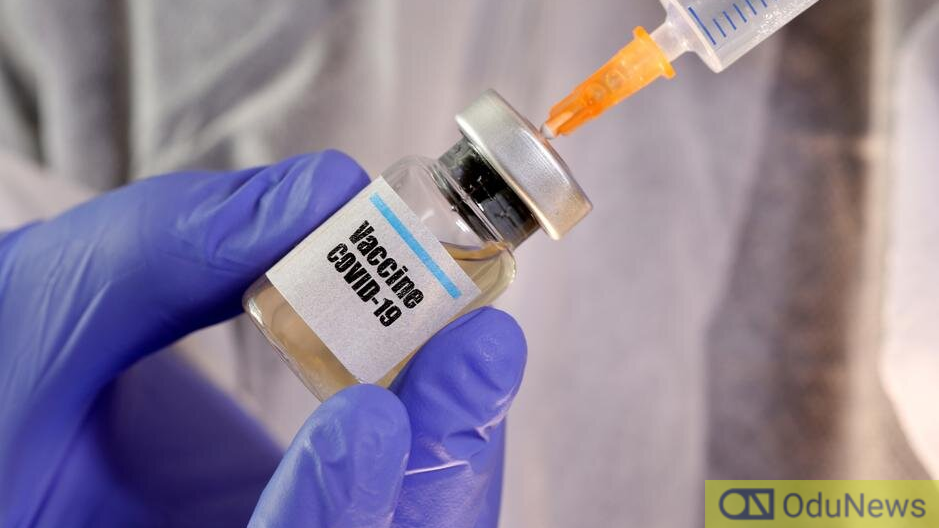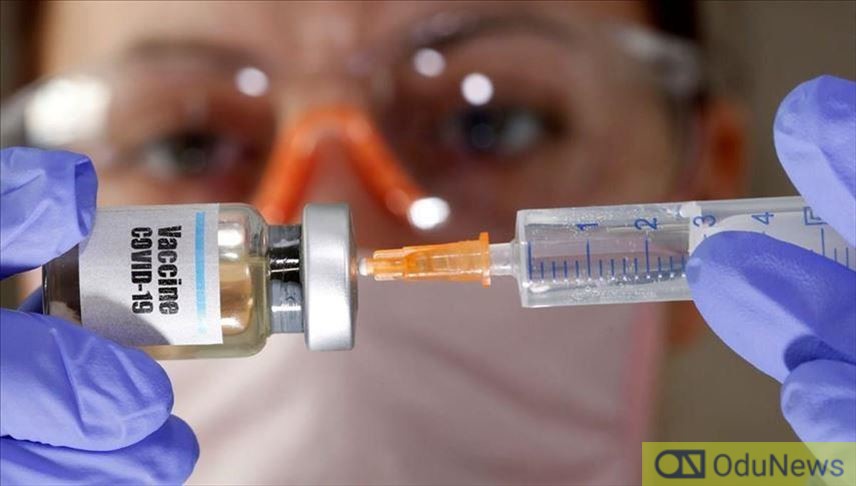
The drugmaker Moderna announced on Monday that its coronavirus vaccine was 94.5 percent effective, based on an early look at the results from its large, continuing study.
Researchers said the results were better than they had dared to imagine. But the vaccine will not be widely available for months, probably not until spring.
Moderna is the second company to report preliminary data on an apparently successful vaccine, offering hope in a surging pandemic that has infected more than 53 million people worldwide and killed more than 1.2 million. Pfizer, in collaboration with BioNTech, was the first, reporting one week ago that its vaccine was more than 90 percent effective.
Pfizer and Moderna were the first to announce early data on large studies, but 10 other companies are also conducting big Phase 3 trials in a global race to produce a vaccine, including efforts in Australia, Britain, China, India and Russia. More than 50 other candidates are in earlier stages of testing.
The Food and Drug Administration has said that coronavirus vaccines should be at least 50 percent effective to be approved.
Researchers test vaccines by inoculating some study participants and giving others placebos, and then watching the two groups to see how many people get sick. In Moderna’s study, 95 people contracted the coronavirus: five who were vaccinated, and 90 who received placebo shots of saltwater. Statistically, the difference between the two groups was highly significant. And of the 95 cases, 11 were severe — all in the placebo group.

The results were analyzed by an independent data safety monitoring board, appointed by the National Institutes of Health.
Moderna, based in Cambridge, Mass., developed its vaccine in collaboration with researchers from the Vaccine Research Center, part of the National Institute of Allergy and Infectious Diseases.
Dr. Anthony S. Fauci, director of the institute, said in an interview: “I had been saying I would be satisfied with a 75 percent effective vaccine. Aspirationally, you would like to see 90, 95 percent, but I wasn’t expecting it. I thought we’d be good, but 94.5 percent is very impressive.”
Stéphane Bancel, the chief executive of Moderna, said in a statement that the results had provided “the first clinical validation that our vaccine can prevent Covid-19 disease, including severe disease.”
Pfizer and Moderna each announced the findings in news releases, not in peer-reviewed scientific journals, and the companies have not yet disclosed the detailed data that would allow outside experts to evaluate their claims. Therefore, the results cannot be considered conclusive. The studies are continuing, and the figures on effectiveness may change.
The companies’ products open the door to an entirely new way of creating vaccines — and creating them fast. Both use a synthetic version of coronavirus genetic material, called messenger RNA or mRNA, to program a person’s cells to churn out many copies of a fragment of the virus. That fragment sets off alarms in the immune system and stimulates it to attack, should the real virus try to invade. Although a number of vaccines using this technology are in development for other infections and cancers, none have yet been approved or marketed.
“The fact that two different vaccines made by two different companies with two different kinds of structures, in a new messenger RNA concept, both worked so effectively confirms the concept once and for all that this is a viable strategy not only for Covid but for future infectious disease threats,” said Dr. Barry R. Bloom, a professor of public health at Harvard.
Natalie E. Dean, a biostatistician at the University of Florida, said an important finding was that the vaccine appeared to prevent severe disease. Pfizer did not release information about disease severity when reporting its results.
Researchers say the positive results from Pfizer and Moderna bode well for other vaccines, because all of the candidates being tested aim at the same target — the so-called spike protein on the coronavirus that it uses to invade human cells.
But it will be important to determine whether the vaccines work equally well in older and younger people, experts say. Researchers also want to know if the vaccines prevent people from spreading the virus — an ideal result that could help quash the pandemic.
Another big unknown is how long the immunity provided by the vaccines will last.
An additional concern is that both vaccines must be stored and transported at low temperatures — minus 4 degrees Fahrenheit for Moderna, and minus 94 Fahrenheit for Pfizer — which could complicate their distribution, particularly to low-income areas in hot climates. Although both vaccines are made of mRNA, their temperature requirements differ because they use different, proprietary formulations of fat to encase and protect the mRNA, Ray Jordan, a Moderna spokesman, said.
Other coronavirus vaccines being developed will need only refrigeration. If handled improperly, vaccines can become inactive.
But on Monday, Moderna said researchers had found that its vaccine had a longer shelf life in the refrigerator than previously thought: 30 days, not seven. And it will last 12 hours at room temperature, the company said.
Dr. William Schaffner, an infectious disease expert at Vanderbilt University, said the relative ease of handling the Moderna vaccine would give it a big advantage.
“This vaccine presents the opportunity of using doctors’ offices, clinics and pharmacies as vaccination sites,” he said, adding that he would not be surprised, should both vaccines become available, if vaccination sites requested Moderna’s.
Both companies said they expected to apply within weeks to the F.D.A. for emergency authorization to begin vaccinating the public. In addition to the evidence for effectiveness, the companies must also submit two months of safety data on at least half of the participants.
So far, studies of the two vaccines have not found serious side effects, but participants have reported sore arms, fatigue, fever and joint and muscle aches that last for a day or two.
Moderna said it would have 20 million doses ready by the end of 2020; Pfizer said it would have about 50 million by then. Both vaccines require two shots, so 20 million doses would be enough for 10 million people.
On Friday, Moncef Slaoui, the chief scientist for Operation Warp Speed, the Trump administration’s program to accelerate development of vaccines and treatments for Covid-19, said that if any early vaccine candidates received permission for emergency use, immunization could begin sometime in December. Dr. Fauci said the vaccines would probably not be widely available before April.
The U.S. government will buy the vaccines and give them to the public free of charge. But both companies expect to profit, and not to provide their products at cost. Moderna said it would charge other governments from $32 to $37 per dose. The charge to the United States, which has already committed about $2.5 billion to help develop Moderna’s vaccine and buy doses, comes out to about $24.80 a shot, according to Mr. Jordan, the company spokesman.
Pfizer did not take any money from the U.S. government to develop or test its vaccine. But Operation Warp Speed has promised Pfizer $1.95 billion to provide 100 million doses, which comes out to $19.50 per dose.
Both of the companies’ vaccine candidates began large human trials on the same date, July 27.
Moderna had planned a first interim analysis of its trial data when the number of Covid-19 cases among participants reached 53. But the recent surge in cases drove the number to 95, and it is likely to speed completion of the study.
Moderna announced on Oct. 22 that it had completed enrollment of its 30,000-person study, and that 25,650 participants had already received two shots. The company had slowed enrollment in September to ensure diversity among participants, and ultimately included 37 percent from communities of color, and 42 percent from populations considered at high risk because they were over 65 or had conditions like diabetes, obesity or heart disease.
As in Pfizer’s study, half of the participants were given the experimental vaccine and half a placebo shot of saltwater, with neither the patients nor their doctors knowing which one they had received. Moderna’s vaccine requires four weeks between shots, and Pfizer’s needs three weeks.
Dr. Tal Zaks, Moderna’s chief medical officer, said the results of its study were so strong that the company felt an ethical obligation to offer the vaccine to the placebo group as soon as possible.
Moderna said it could produce 500 million to one billion doses in 2021.
The company is working with the Swiss company Lonza and Laboratorios Farmacéuticos Rovi of Spain to make doses of the vaccine outside the United States.
Dr. Bloom noted that Moderna had never marketed a vaccine before, and he questioned whether the company had the capacity to manufacture hundreds of millions of doses.
Moderna has received a commitment of $955 million from the U.S. government’s Biomedical Advanced Research and Development Authority for research and development of its vaccine, and the United States has committed up to $1.525 billion to buy 100 million doses.
Moderna has already taken the early steps needed to apply to government agencies in Britain, Canada and Europe to market its vaccine, and the company has made deals to sell 50 million doses to Japan and unspecified amounts to Qatar and Israel.


Comments are closed.